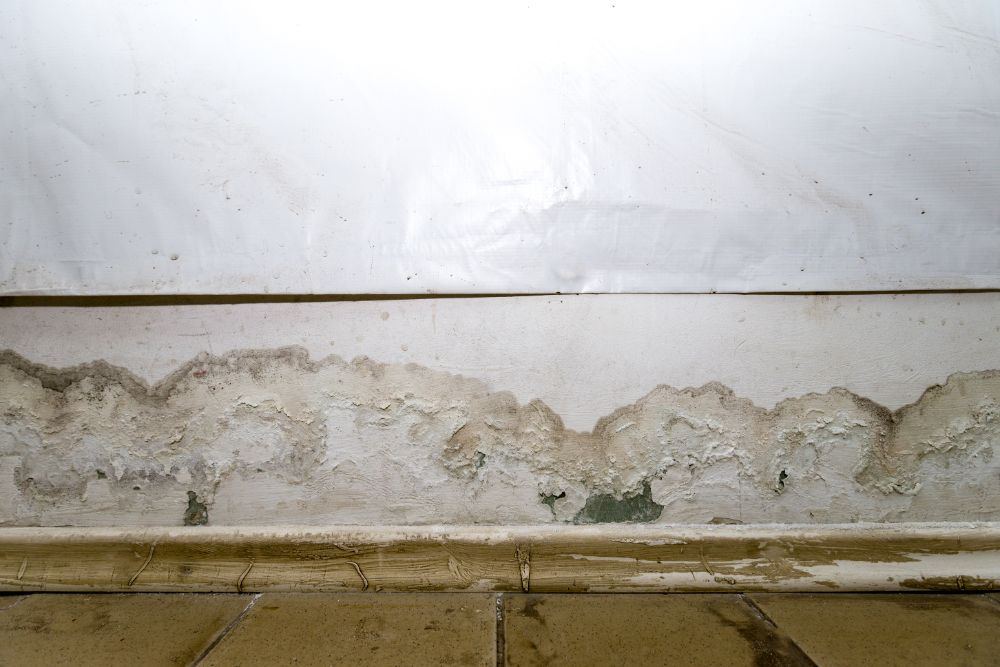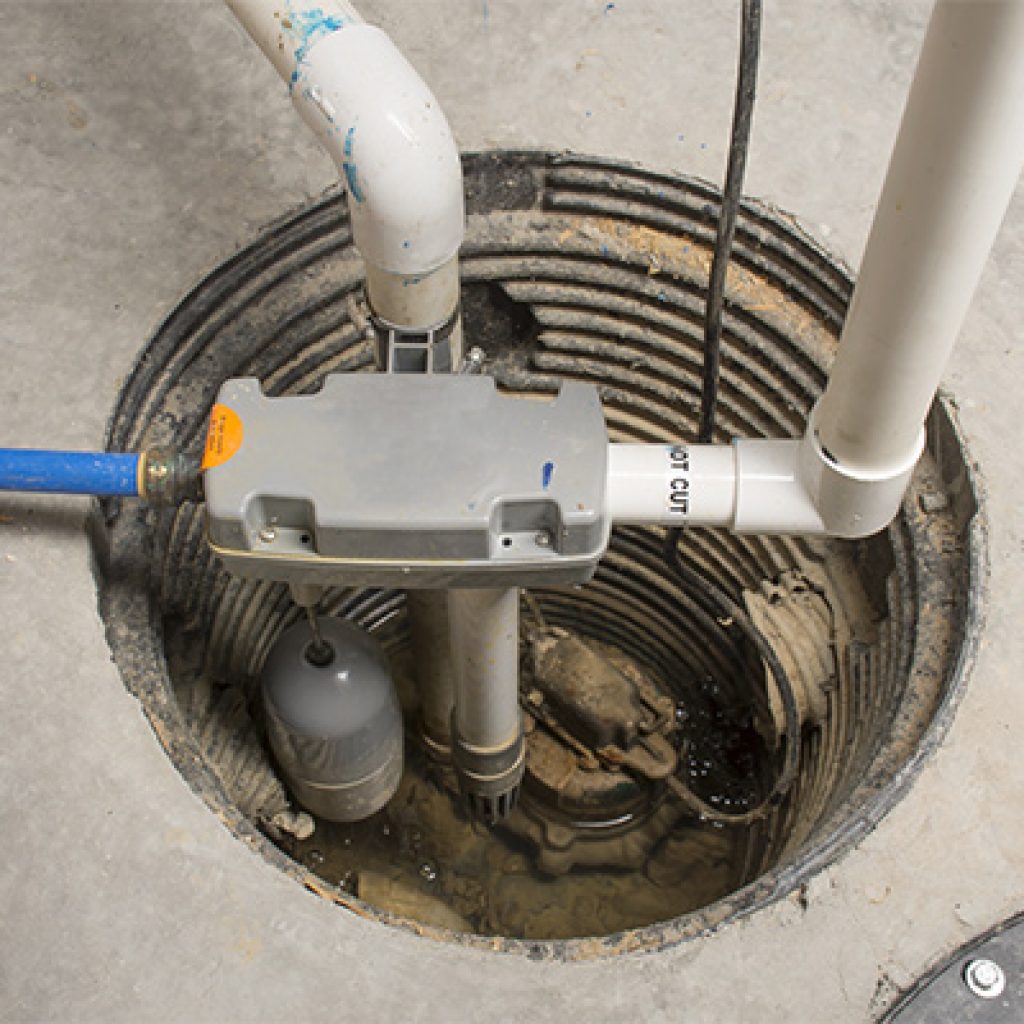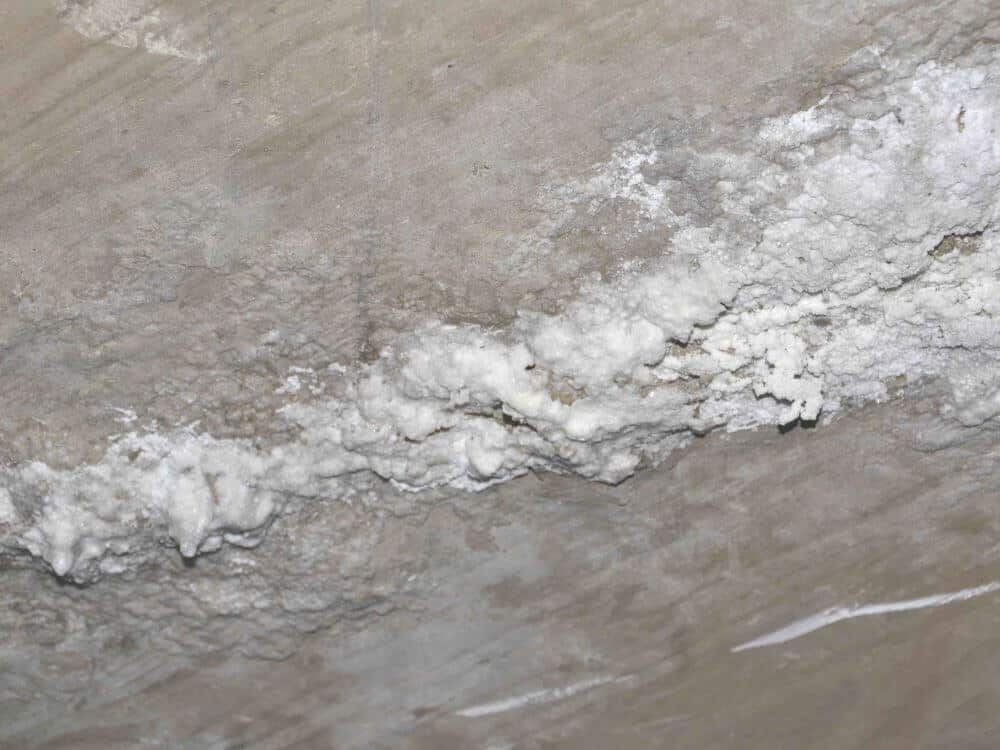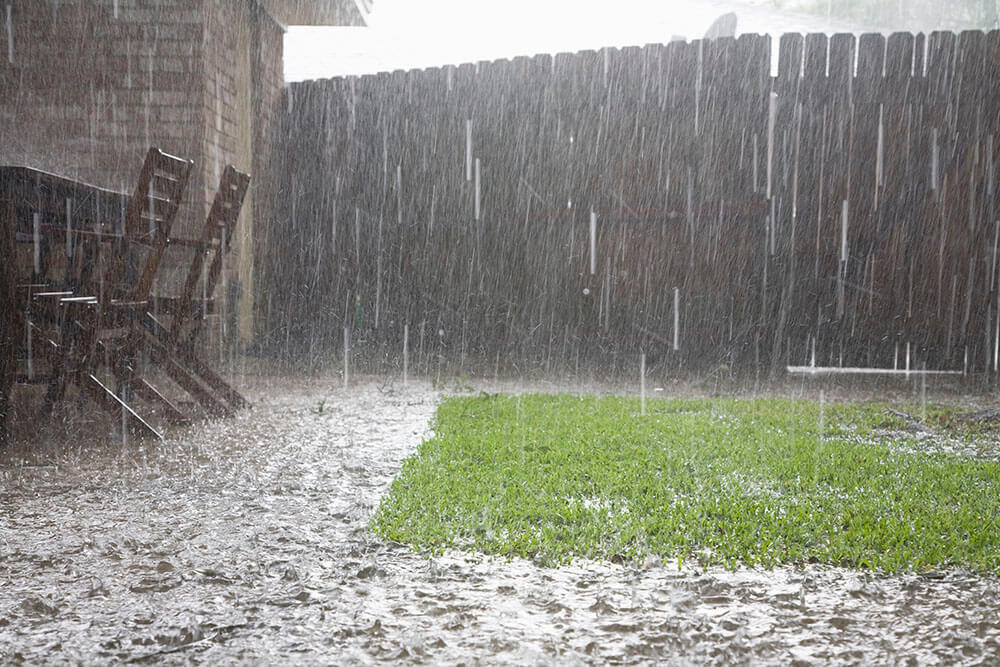At a glance, basement waterproofing may seem simple, but it isn’t always so. Some parts of the basement require special attention when waterproofing or you’ll end up with wasted materials and a big moisture problem on your hands.
One particular basement moisture leak that many homeowners struggle with is water coming in basement where walls meet floor. Here’s everything you need to know about such leaks and rectifying them.
Cove Joint Leaks
A cove joint leak is when you have a basement leak at the spot where the wall meets the floor. How does it happen?
To create your basement, a large hole was dug and its surface covered with poured concrete. The poured concrete footing in the basement ends up supporting your foundation walls and prevents the settling or rising of your building.
The concrete footing is created by pouring wet cement into a wooden form. While the cement is still wet, a specially designed board is inserted into its center across its entire length to create a tapered channel. The tapered channel is called a keyway and it creates a path right down the middle of the entire footing,
After the footing dries, another form is set over it to create the foundation walls. The new form is filled with concrete and its bottom part fits into the keyway of the initial concrete footing. When it dries, the foundation wall stays in the keyway like Lego pieces fitting into one another.
The point where the foundation wall enters the footing is called the cove joint and it prevents lateral movement. But note that the footing and foundation wall don’t merge. They simply fit into one another like a plug into a socket. Because they remain distinct pieces, there’s still some room between both for water from the basement’s surrounding soil to enter.
When water enters the tiny space between the foundation wall and the footing in the keyway, it can seep into your basement, causing a cove joint leak.
So, how do we fix such leakages?
Is Your Home Suffering From a Cove Joint Leak?
We offer FREE onsite estimates in Vaughan and the surrounding area
Repairing Cove Joint Leaks
Once a basement is built, filling or patching a cove joint to stop moisture leakage isn’t possible. It doesn’t matter if you use hydraulic cement, epoxy, or caulk, water will eventually make its way through it.

Since there’s no way to block the leak with lasting results, the next best thing to do is control it. We do this by installing drain tiles beside the footing. The drain tile will collect the moisture leaking in from the cove joint and direct it to the sump pump, which will pump it out of your basement.
A drain tile consists of a perforated plastic pipe that’s embedded in a bed of washed stone. Installing it is quick and easy, and it’s a durable solution for cove joint leaks. It also requires minimal maintenance, making it a cost-effective solution for keeping your basement dry.
Depending on your basement type and your preference, interior and/or exterior drain tiles can be installed to resolve a cove joint leak. Both have unique benefits, which we’ll take a look at now.
Interior vs Exterior Drain Tile
Both interior and exterior drain tiles effectively control cove joint leaks. But interior drain tile is more versatile for the following reasons.
Why Choose Interior Drain Tile
- Unlike exterior drain tile, interior drain tile relieves hydrostatic pressure under the floor. That is, when water forces its way up from cracks in your basement floor, the interior drain tile will collect and direct it to the sump pump.
- Water that accumulates in basement window wells and flows over into the basement can be caught by the interior drain tile.
- Installing it is quick and requires no excavation outside the home.
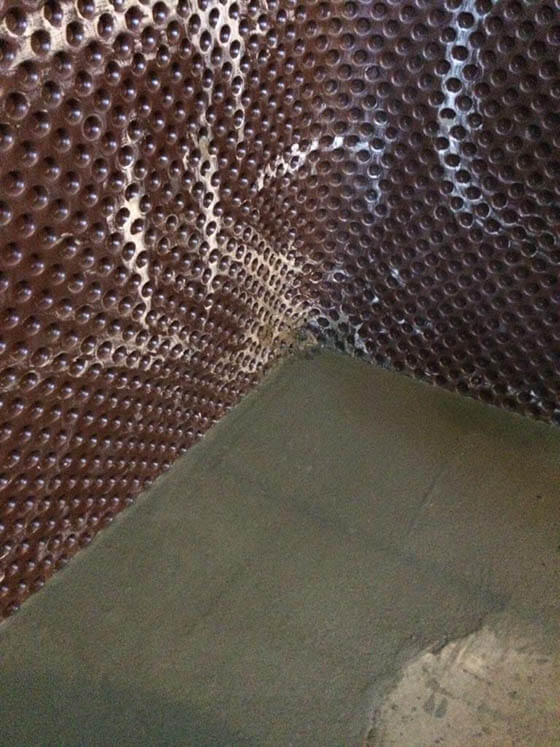
Why Choose Exterior Drain Tile
Unlike interior drain tile that catches and redirects water that gets into your basement, exterior drain tile intercepts water before it gets into your basement. It’s suitable for stopping seepage from misplaced downspouts, heavy rains, overflowing gutters, and more.
Other benefits of installing exterior drain tile include:
- Water passing through your foundation wall will, over time, compromise its integrity. An exterior drain tile prevents this by keeping water away from the foundation wall, keeping the basement dry and protecting the wall itself.
- For homes that have a foundation built with stones, concrete blocks, or bricks, exterior drain tile is effective for preventing water from leaking through the mortar used to keep the masonry together. It does this by redirecting the water before it gets to the wall.
- For those who already have a finished and furnished basement, but have seepage issues, exterior drain tile is the perfect solution. That’s because installation is done outside the basement without disrupting any part of your already finished basement.
As you can see, both interior and exterior drain tile have their benefits. Generally, the most bulletproof approach to resolving basement leaks between the wall and floor is installing both. The exterior drain tile will stop moisture from coming anywhere near the foundation wall while the interior drain tile gets rid of any moisture that does manage to get in.
Having trouble deciding whether to install one or both? Our basement waterproofing professionals can provide you with expert advice to determine which solution is the best fit for the unique needs of your home.

